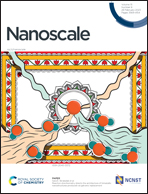Photo-enhanced lithium-ion batteries using metal–organic frameworks†
Abstract
The development of photo-enhanced lithium-ion batteries, where exposing the electrodes to light results in higher capacities, higher rate performance or self-charging, has recently gained substantial traction. The challenge in these devices lies in the realisation of photo-electrodes with good optical and electrochemical properties. Herein, we propose copper-hexahydroxybenzene as the active photo-electrode material which both harvests light and stores energy. This material was mixed with reduced graphene oxide as a conductive additive and charge transfer medium to create photo-active electrodes. Under illumination, these electrodes show improved charge storage kinetics resulting in the photo-accelerated charging and discharging performance (i.e. specific capacities improvement from 107 mA h g−1 to 126 mA h g−1 at 200 mA g−1 and 79 mA h g−1 to 97 mA h g−1 at 2000 mA g−1 under 1 sun illumination as compared to dark).

- This article is part of the themed collection: Nanoscale Horizons and Nanoscale: Nanomaterials for Energy


 Please wait while we load your content...
Please wait while we load your content...